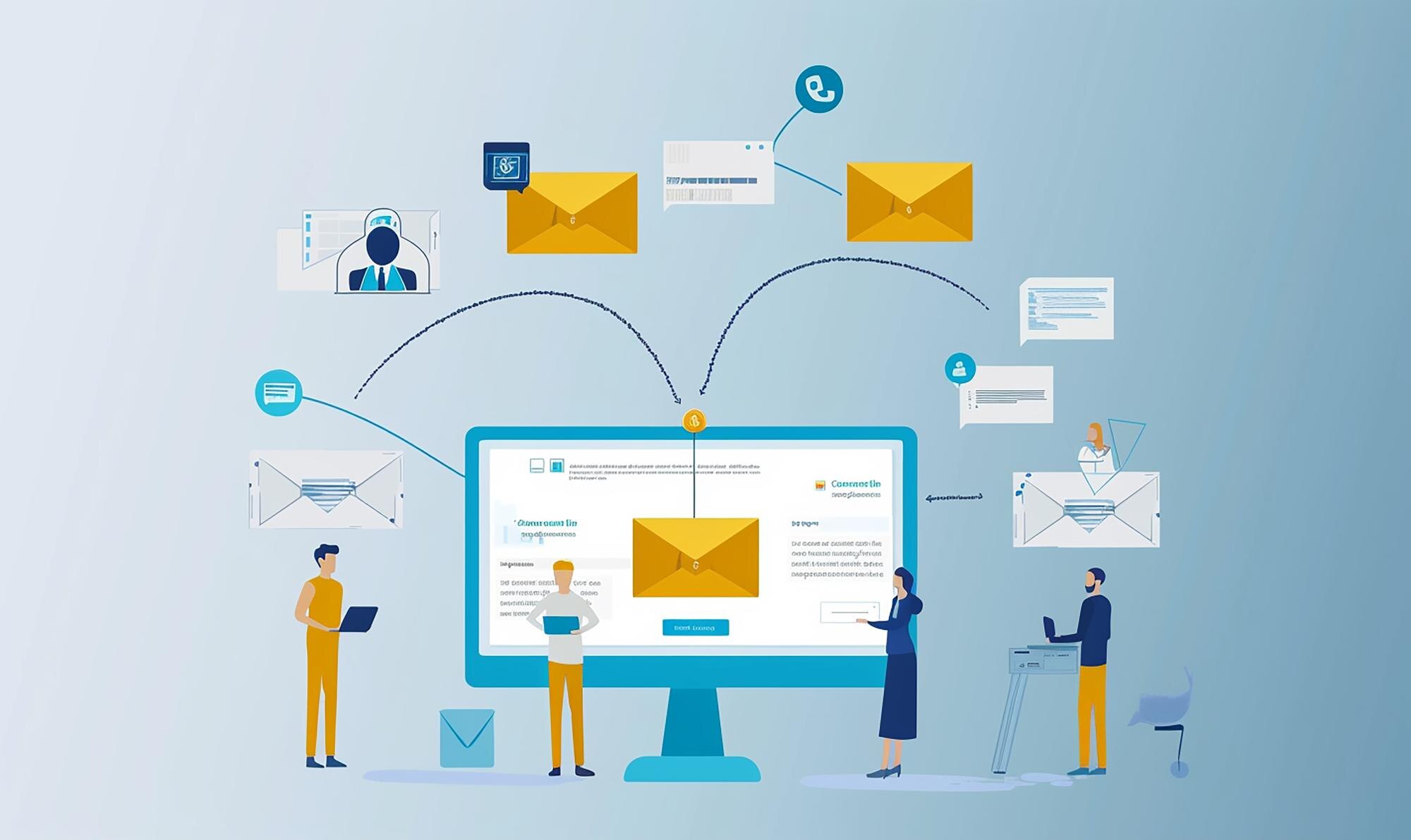Estimated reading time: 9 minutes
Key Takeaways
- The average professional spends 28 per cent of the workday dealing with emails, that’s more than two hours every day.
- Learning to delegate and simplify email workflow is no longer optional; it is essential for maintaining productivity and sanity across the modern digital workplace.
- With the right strategies and tools, you can turn a chaotic inbox into a streamlined communication hub.
- Delegation, prioritisation, and automation work together to speed up processing and reduce stress.
- Start with one small delegation or automation today and build momentum.
Table of Contents
Stop Drowning in Emails and Reclaim Your Workday Today
Are you wading through a tide of unread messages? Does your inbox read like an endless to-do list? You are not alone. The average professional spends 28 per cent of the workday dealing with emails, that’s more than two hours every day. Learning to delegate and simplify email workflow is no longer optional; it is essential for maintaining productivity and sanity across the modern digital workplace.
Email overload does not just waste time, it fragments attention, raises stress, and blocks focus on high-value tasks. The encouraging news is that, with the right strategies and tools, you can turn a chaotic inbox into a streamlined communication hub.
This guide sets out practical ways to delegate email responsibilities, simplify your processes, and use automation to lighten the load. You will see which productivity tools can save hours each week and learn workflow techniques applied by top performers.
By the end, you will have a clear roadmap to regain control of your inbox, delegate with confidence, and build an email system that works for you, not against you.
Why Delegating Email Workflow Matters
Delegating email workflow means assigning specific tasks to colleagues or letting technology handle them automatically. This approach is not about shirking duties, it is about smart resource allocation that lifts team efficiency and individual output.
The Benefits of Email Task Delegation
When you delegate email workflow well, you enjoy several immediate gains:
- Reduced personal workload: Shifting routine email tasks frees up 5-10 hours weekly for many professionals
- Enhanced focus: With fewer inbox interruptions, concentration on complex projects improves by up to 40 per cent
- Better prioritisation: Delegation forces clarity about what truly needs your personal attention
- Faster response times: Shared responsibility means critical messages get handled promptly
- Team skill development: Delegation opens growth opportunities for colleagues
Research shows that leaders who excel at delegation deliver stronger team results and report lower burnout rates. A Harvard Business Review study found that executives who delegate effectively generate 33 per cent more revenue than those who struggle.
The most delegation-ready email tasks include replying to routine enquiries, scheduling appointments, handling follow-ups, sorting and categorising messages, and drafting responses for review. These activities often swallow time disproportionate to their strategic value, making them ideal candidates for delegation.
Strategies to Simplify Email Workflow
Simplifying your workflow involves building systems that cut complexity and speed up handling of incoming and outgoing messages. Effective simplification underpins both delegation and automation.
Organising for Efficiency
Put these proven steps into practice:
- Create a folder structure: Design a logical organisation system with folders for projects, clients, team members, or priorities
- Use labels and categories: Apply visual cues to spot message types quickly (urgent, FYI, action required)
- Implement the 4D method: For each message, decide to Delete, Delegate, Do, or Defer
- Batch processing: Tackle emails in set time blocks rather than constantly through the day
- Establish email-free times: Reserve periods for focused work when you do not check messages
Consistency is key. Productivity researchers note that the average person loses 27 minutes regaining focus after an interruption. By batching email sessions, you can cut these costly shifts by up to 80 per cent.
Prioritisation Systems
Not every message deserves equal attention. Try these tactics:
- VIP lists: Set your email client to flag messages from key stakeholders
- Subject line protocols: Agree team tags such as [URGENT], [FYI], or [DECISION NEEDED]
- Response timeframes: Define when replies are expected (for example, same-day for urgent items, 48 hours for standard requests)
- Use templates: Store standard replies for common enquiries to speed processing
Once your email flow is organised and prioritised, delegation and automation slot neatly into place. A streamlined system lets you process messages 40-60 per cent faster while ensuring vital communication never slips through the cracks.
Leveraging Email Automation
Automation converts manual, repetitive tasks into rules that run without constant human input. Done well, it slashes time spent on routine mail and improves consistency and speed.
What Is Email Automation?
Automation software triggers specific actions when set conditions are met. Instead of handling each task yourself, you build rules that fire automatically. This applies to personal productivity and to marketing campaigns alike.
The impact on efficiency is striking:
- Time savings: Professionals using automation report saving 5-15 hours each week
- Improved consistency: Automated replies secure standardised communication regardless of workload
- Fewer errors: Rules remove human slips in routine messages
- Round-the-clock responsiveness: Automated acknowledgements reach senders even outside business hours
Email marketing automation delivers particularly remarkable results, with automated campaigns generating 320 per cent more revenue than non-automated messages. These systems keep audiences engaged through perfectly timed, personalised communication that would be impossible to manage by hand.
To automate wisely, start by spotting the repetitive processes in your current flow. Common opportunities include:
- Out-of-office replies: Automatic messages during leave or travel
- Receipt confirmations: Acknowledging message delivery
- Meeting scheduling: Automating appointment booking
- Follow-up sequences: Timed reminders at set intervals
- Newsletter delivery: Regular content distribution
By using automation thoughtfully, you let software handle predictable exchanges, freeing you for work that needs human judgement and creativity.
Email Automation Tools
Choosing the right platform can dramatically lift productivity. Options vary by need, skill level, and budget.
Top Email Automation Tools Compared
| Tool | Best For | Key Features | Pricing Start | Free Plan |
|---|---|---|---|---|
| Moosend | Easy setup | Wide triggers, transactional emails | £7/month | 30-day trial |
| ActiveCampaign | SMBs, sales teams | CRM, flexible automation, lead scoring | £15-31/month | 14-day trial |
| Brevo (Sendinblue) | Cost-conscious ecommerce | Email & SMS automation, transactional emails | £6-23/month | Limited daily emails |
| MailerLite | Small businesses, freelancers | Drag-and-drop builder, basic automation | £7/month | Up to 1,000 subscribers |
| Mailchimp | New users, customer journeys | Pre-built templates, multi-step workflows | £10-16/month | Limited contacts |
| Klaviyo | Ecommerce stores | Cart recovery, segmentation | £36/month | Up to 250 profiles |
| GetResponse | SMBs, all-in-one marketing | Funnels, webinars, email workflows | £12/month | Up to 500 contacts |
Choosing the Right Email Workflow Software
Weigh these factors before committing:
- Integration: Check compatibility with your current tech stack
- Interface: Pick a design that matches your comfort level
- Scalability: Ensure the platform can grow with your team
- Support: Review the quality of customer help
- Analytics: Confirm reporting tools meet your measurement needs
Campaign automation platforms usually provide more capability than basic clients, including:
- Visual workflow builders: Drag-and-drop interfaces for complex rules
- Conditional logic: Branching paths based on recipient actions
- Advanced segmentation: Target groups by behaviour or traits
- A/B testing: Compare different approaches to optimise performance
- Detailed analytics: Track opens, clicks, and conversions
An analysis by Moosend shows that firms using comprehensive automation see a 14.5 per cent rise in sales productivity and cut marketing overhead by up to 12.2 per cent. The right toolset not only saves time but can boost revenue and deepen engagement.
Automating Email Tasks
Effective automation follows a clear process: identify suitable tasks, set triggers, craft templates, test, and refine.
Setting Up Email Triggers
Triggers are specific events or conditions that launch an automated response. Typical examples include:
- Time-based triggers: Send at scheduled intervals such as daily reports or weekly updates
- Behavioural triggers: React to recipient actions such as opening emails, clicking links, or completing a purchase
- Data-driven triggers: Fire when a customer meets certain criteria, for example reaching a spend threshold
- Lifecycle triggers: Mark key dates like anniversaries or renewals
Creating Response Templates
Templates keep tone and information consistent. Draft clear, concise messages, personalise with merge fields, and store them in your automation platform. Review language periodically to keep it fresh and relevant.
Testing and Optimisation
Before activating any automated sequence, run internal tests to confirm links, data fields, and timing. Once live, monitor metrics such as open rate, click-through, and conversion. Adjust subject lines, timing, or content in small increments to improve performance.
Monitoring and Maintenance
Automation is not set-and-forget. Revisit workflows quarterly to ensure triggers, templates, and data still align with business goals and legal requirements such as GDPR.
Final Thoughts
Delegating and automating email workflow unlocks hours of productive time each week, lowers stress, and helps teams respond promptly without drowning in administrative tasks. By organising your inbox, prioritising messages, assigning routine work, and letting software handle repetitive exchanges, you reclaim focus for strategic projects that drive real value.
Start with one small delegation or automation today and build momentum. Your future self will thank you for the lighter inbox and sharper concentration.
FAQs
Why does delegating email workflow matter?
Delegating email workflow assigns routine tasks to colleagues or automations, improving efficiency, reducing personal workload, and enabling greater focus on high-value work.
Which email tasks are best suited for delegation?
Routine enquiries, scheduling appointments, follow-ups, sorting and categorising messages, and drafting responses for review are ideal candidates.
What are effective ways to simplify my email workflow?
Create a logical folder structure, use labels and categories, apply the 4D method, batch process emails, and set email-free times to minimise context switching.
How does email automation boost productivity?
Automation handles repetitive tasks with rules and triggers, saving 5-15 hours weekly for many professionals, standardising responses, and reducing errors.
How often should automated workflows be reviewed?
Review automations at least quarterly to verify triggers, templates, data accuracy, and compliance with policies and regulations.







